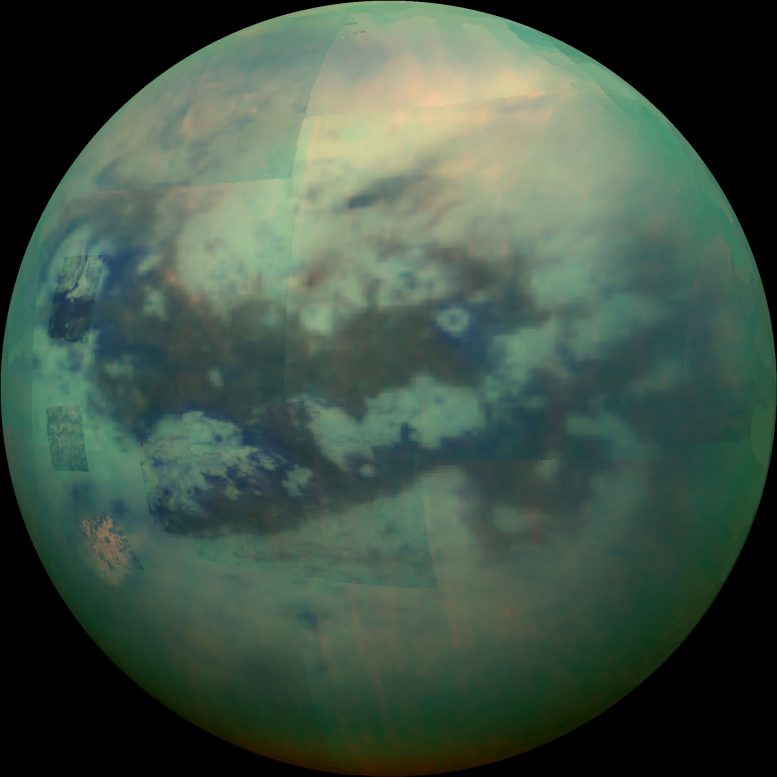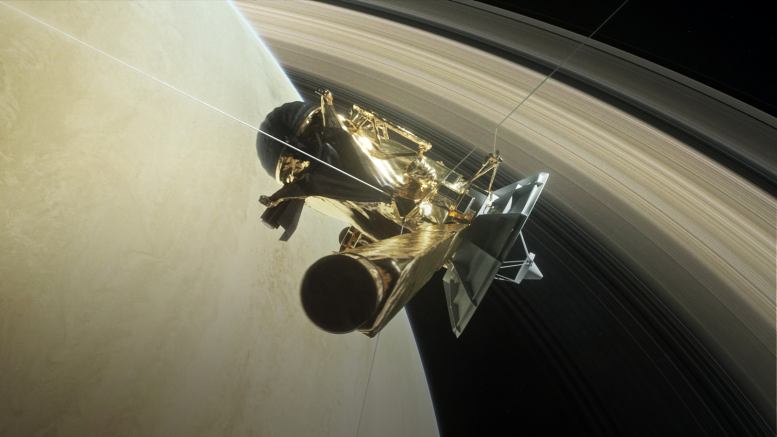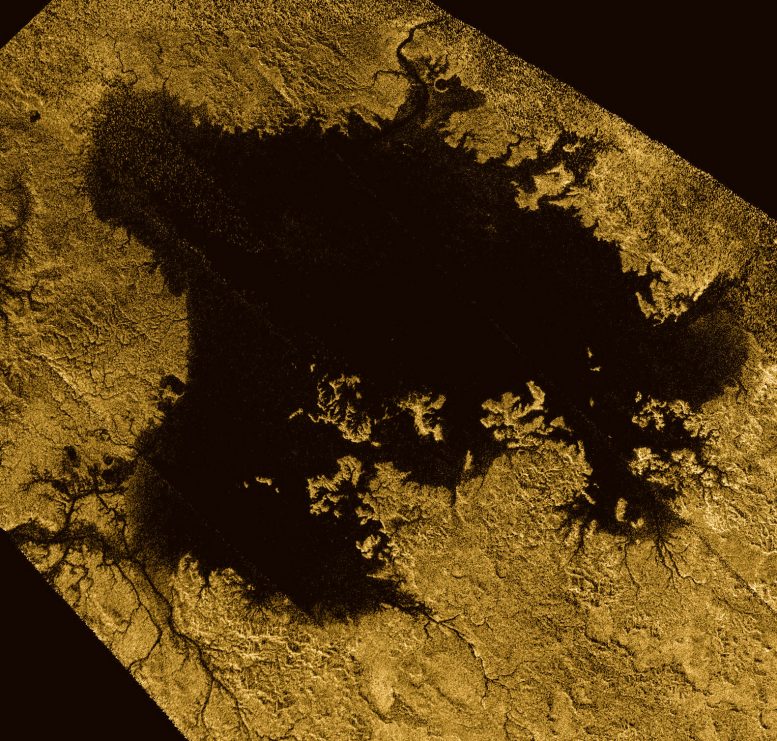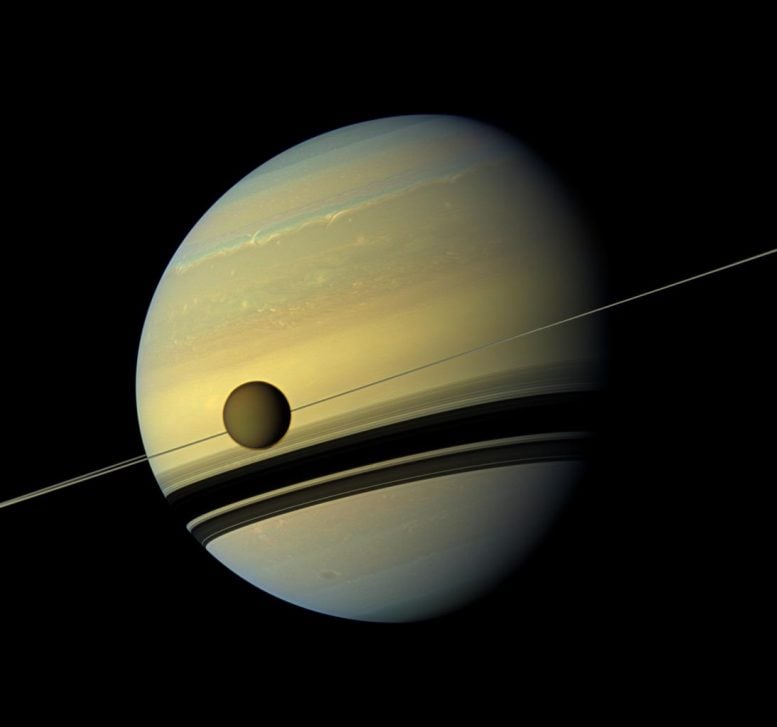
Researchers from Cornell University have utilized bistatic radar data from Cassini’s flybys of Titan to analyze the surface properties of its hydrocarbon seas. The study identifies variations in surface roughness and composition, suggesting diverse geological and meteorological processes at work.
A new study of radar experiment data from the Cassini-Huygens mission to Saturn has yielded fresh insights related to the makeup and activity of the liquid hydrocarbon seas near the north pole of Titan, the largest of Saturn’s 146 known moons.
The key takeaway: Using data from several bistatic radar experiments, a Cornell University-led research team was able to separately analyze and estimate the composition and roughness of Titan’s sea surfaces, something previous analyses of monostatic radar data were unable to achieve. This will help pave the way for future combined examinations of the nature of Titan’s seas using Cassini data.
Valerio Poggiali, research associate at Cornell University, is lead author of “Surface Properties of the Seas of Titan as Revealed by Cassini Mission Bistatic Radar Experiments,” which was published on July 16 in Nature Communications.

Bistatic Radar Experiments
A bistatic radar experiment involves aiming a radio beam from the spacecraft at the target – in this case Titan – where it is reflected toward the receiving antenna on Earth. This surface reflection is polarized – meaning that it provides information collected from two independent perspectives, as opposed to the one provided by monostatic radar data, where the reflected signal returns to the spacecraft.
“The main difference,” Poggiali said, “is that the bistatic information is a more complete dataset and is sensitive to both the composition of the reflecting surface and to its roughness.”
Findings From Titan’s Polar Seas
The current work used four bistatic radar observations, collected by Cassini during four flybys in 2014 – on May 17, June 18, October 24, and in 2016 – on November 14. For each, surface reflections were observed as the spacecraft neared its closest approach to Titan (ingress), and again as it moved away (egress). The team analyzed data from the egress observations of Titan’s three large polar seas: Kraken Mare, Ligeia Mare, and Punga Mare.

Surface Composition and Dynamics
Their analysis found differences in the composition of the hydrocarbon seas’ surface layers, dependent on latitude and location (near rivers and estuaries, for example). Specifically, the southernmost portion of Kraken Mare shows the highest dielectric constant – a measure of a material’s ability to reflect a radio signal. For example, water on Earth is very reflective, with a dielectric constant of around 80; the ethane and methane seas of Titan measure around 1.7.
The researchers also determined that all three seas were mostly calm at the time of the flybys, with surface waves no larger than 3.3 millimeters. A slightly higher level of roughness – up to 5.2 mm – was detected near coastal areas, estuaries, and interbasin straits, possible indications of tidal currents.

Implications and Future Research
“We also have indications that the rivers feeding the seas are pure methane,” Poggiali said, “until they flow into the open liquid seas, which are more ethane-rich. It’s like on Earth, when fresh-water rivers flow into and mix with the salty water of the oceans.”
“This fits nicely with meteorological models for Titan,” said co-author and professor of astronomy Philip Nicholson, “which predict that the ‘rain’ that falls from its skies is likely to be almost pure methane, but with trace amounts of ethane and other hydrocarbons.”
Poggiali said more work is already underway on the data Cassini generated during its 13-year examination of Titan. “There is a mine of data that still waits to be fully analyzed in ways that should yield more discoveries,” he said. “This is only the first step.”
Reference: “Surface properties of the seas of Titan as revealed by Cassini mission bistatic radar experiments” by Valerio Poggiali, Giancorrado Brighi, Alexander G. Hayes, Phil D. Nicholson, Shannon MacKenzie, Daniel E. Lalich, Léa E. Bonnefoy, Kamal Oudrhiri, Ralph D. Lorenz, Jason M. Soderblom, Paolo Tortora and Marco Zannoni, 16 July 2024, Nature Communications.
DOI: 10.1038/s41467-024-49837-2
Other contributors to this work are from the Università di Bologna; the Observatoire de Paris; NASA’s Jet Propulsion Laboratory (JPL); the California Institute of Technology; and the Massachusetts Institute of Technology.
Support for this research came from NASA and the Italian Space Agency.